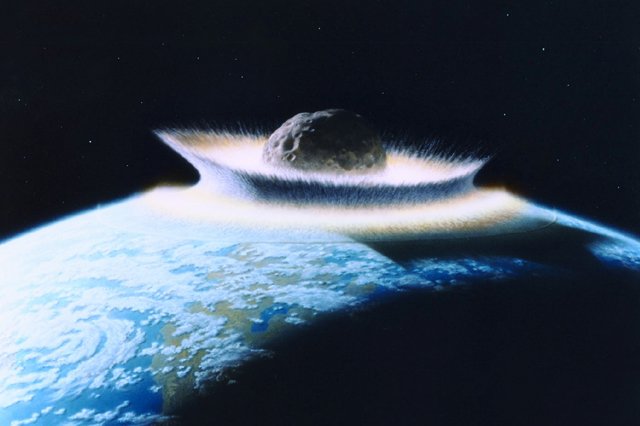New research suggests the crater left behind by the asteroid that killed the dinosaurs was home to sea life less than a decade after impact. Scientists say the findings could have implications for environments altered by climate change today. File Photo by Davis/NASA/UPI |
License Photo
May 30 (UPI) -- Scientists have found that life rebounded rapidly in the crater left behind by the asteroid that killed the dinosaurs 66 million years ago.
The asteroid triggered a mass extinction, killing off 76 percent of life on Earth. But new research led by the University of Texas at Austin, and published Wednesday in the journal Nature, suggests that the crater left by the asteroid harbored sea life less than a decade after impact.
And within 30,000 years, it had fostered a thriving ecosystem, which is a much faster recovery than other sites around the world, scientists say.
Scientists were surprised by the new findings, which undermine a theory that recovery at sites closest to the crater was slower because of environmental contaminants released by the impact, such as toxic metals.
The evidence suggests instead that recovery around the globe was influenced by local factors, which could have implications for environments altered by climate change today.
"We found life in the crater within a few years of impact, which is really fast, surprisingly fast," Chris Lowery, a postdoctoral researcher at the University of Texas Institute for Geophysics who led the study, said in a press release. "It shows that there's not a lot of predictability of recovery in general."
The evidence for life in the study came mostly from microfossils, which are the remains of unicellular organisms such as algae and plankton. The evidence also came from the burrows of larger organisms discovered in a rock extracted from the crater during a recent drilling conducted by the International Ocean Discovery Program and International Continental Drilling Program.
The smaller fossils prove that life inhabited the crater and provide a general indicator of habitability in the environment years after impact. The rapid recovery also suggests that shortly after the impact life forms other than the microscopic ones called the crater home again.
"Microfossils let you get at this complete community picture of what's going on," Lowery said. "You get a chunk of rock and there's thousands of microfossils there, so we can look at changes in the population with a really high degree of confidence... and we can use that as kind of a proxy for the larger scale organisms."
The scientists found the first evidence of what appeared to be life two to three years after impact: burrows made by small shrimp or worms. Roughly 30,000 years after impact, the ecosystem was teeming with life, with blooming phytoplankton supporting a diverse community of organisms in the surface waters and on the sea floor.
To compare, other areas around the world, including the North Atlantic and other areas of the Gulf of Mexico, took up to 300,000 years to reestablish an ecosystem of that level.
The rate of rebound of life in the crater suggests that although the asteroid caused the extinction, it didn't hamper recovery. The scientists emphasize local factors, such as water circulation, interactions between organisms and the availability of ecological niches, as having the most influence on a specific ecosystem's recovery rate.
The findings indicate that recovery after a global catastrophe could be a local affair, the researchers say.















